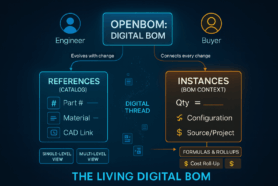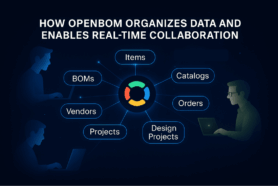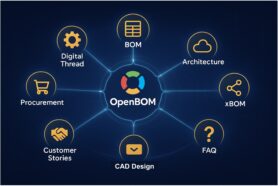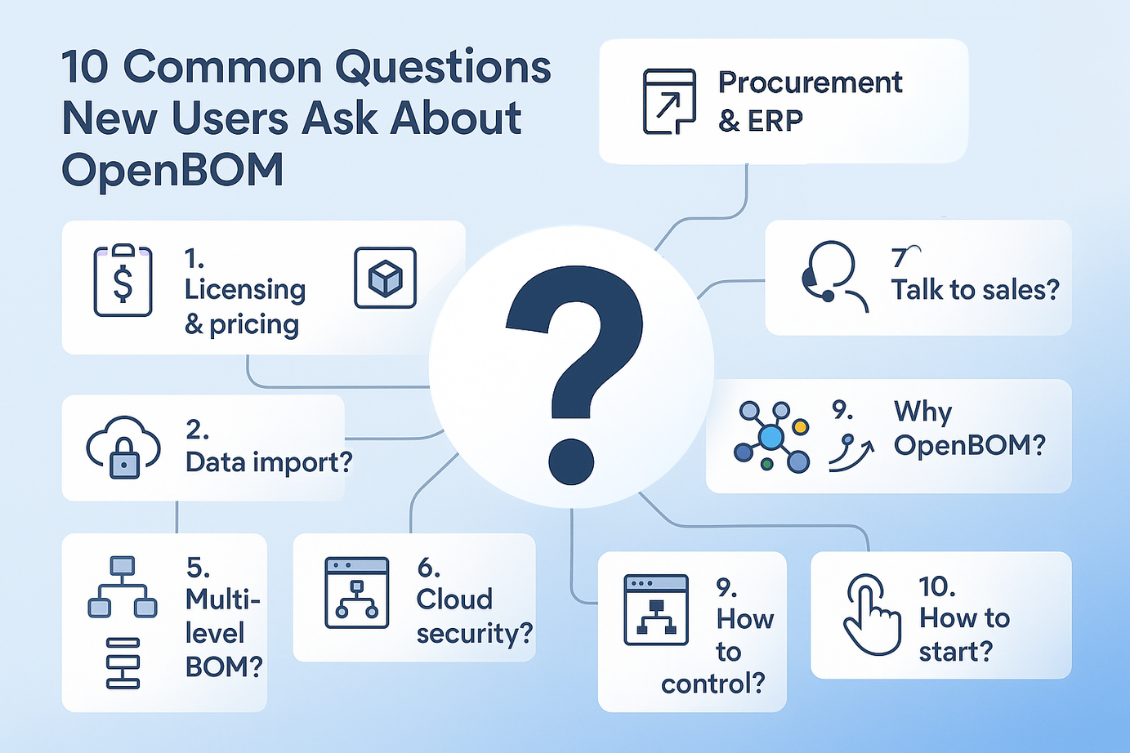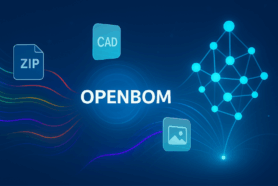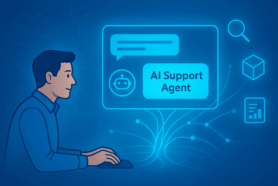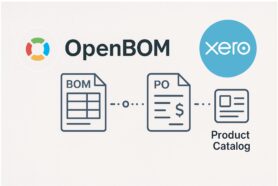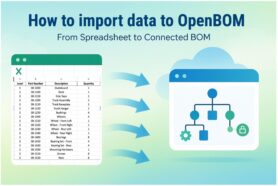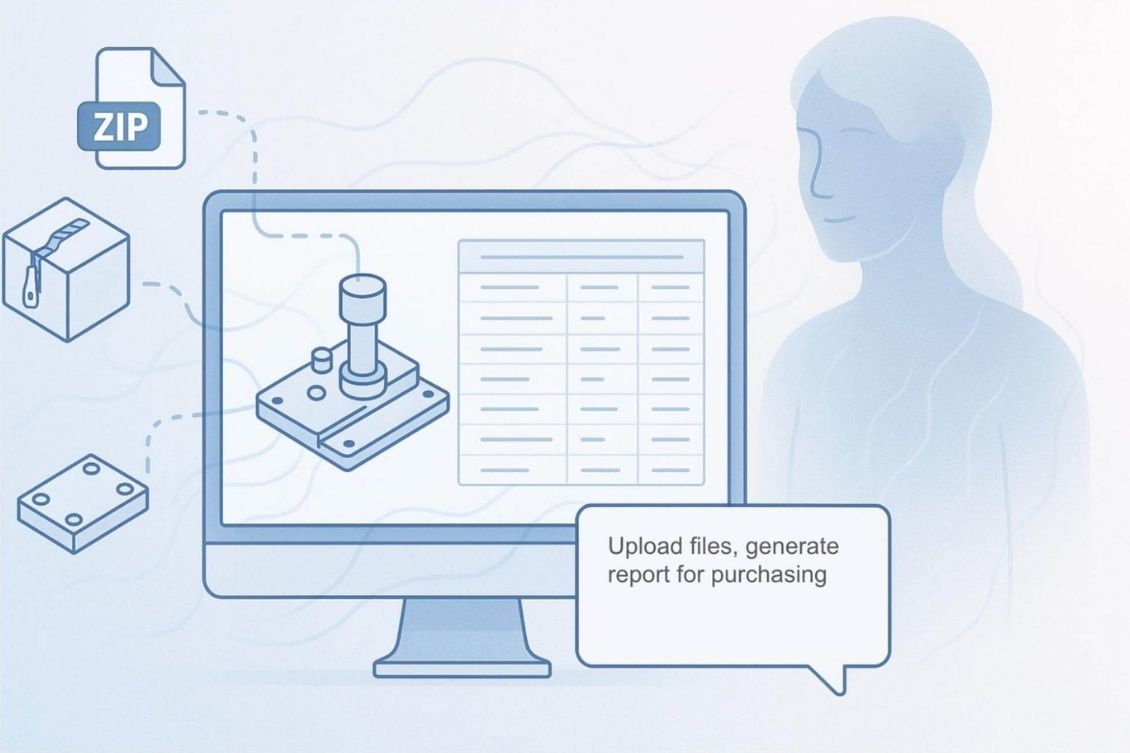
We notice bad tools. The good ones disappear. There’s something powerful about tools that don’t scream for your attention. They don’t flash, buzz, or demand a tutorial before getting out of your way. Instead, they melt into the background. You don’t remember when you started using them—only that you’d feel lost without them.
Think of your best browser extension, that one keyboard shortcut you use 20 times a day, or the notification that shows up just when you need it. Invisible. Embedded. Always present. That’s not just good design. That’s a design philosophy. At OpenBOM, we believe product data tools should be ubiquitous and provide easy and seamless interface. They shouldn’t require a project plan just to help you get a list of parts. They shouldn’t ask for a migration before you can compare two product variants. And they certainly shouldn’t be yet another system to learn.
When we started OpenBOM, we believed that an easy and familiar user interface paradigm is a key to adoption. And it was an absolute true. A spreadsheet-like user interface of OpenBOM combined with integration and collaboration was part of the successful user adoption. Now we are considering that we need to do more. This is how we come to the philosophy of an invisible agent.
One size doesn’t fit all. After several years of working with many OpenBOM customers, we realized that there is a type of interaction that customers demand that will blend into the existing process – we work the way you work. Many OpenBOM customers are brining data from multiple systems, partners, contractors to perform some actions and send this data to someone else to another organizations. Those “workflows” are natural for them and in many ways people like them because of their simplicity. If a customer get multiple files from suppliers and need to plug-in cost into an entire BOM or has product design information coming from multiple engineers and need to combine it together, they like to see a quick and easy output – not a complex project to create a report.
That’s why we’re bringing something new to OpenBOM – an AI agent you can talk to and use the same files you’re regularly exchanging with other people – Excel, CAD files, and Zips. But we want to bring an experience system that doesn’t feel like a complex system. It simply gives you results. It supports your existing product workflow—quietly, contextually, and intelligently.
We call this the OpenBOM BOM AI Agent. But let’s take a step back first.
The Hidden Strain of Visible Tools
Traditional PLM and data management systems live in silos. You log in, load data, run exports, and email spreadsheets just to complete everyday tasks. Worse yet, if you need to do something specific—create a list of components for a purchasing team, check supplier alternatives, or prepare a cost analysis—you end up building ad hoc workflows, usually around the limitations of the system or its user experience.
The irony? You’re spending time on the details of managing the software system, not your product data. How many times, you’ve seen how companies exporting data from PLM software, just to edit in in Excel and import again for a “single source of truth”? I’ve seen it a lot.
Now, consider a different approach. What if the system knows what you need based on what you’re doing? What if, when you upload a ZIP of files, it detects parts and BOMs, creates a product structure, and gets it ready for your next task—without asking you a dozen questions. What if the tools disappear, and the results just show up?
What we found with many customers – they manage their processes as a sequence of tasks. They like to get an output of the task and provide it to the next person (task).
OpenBOM Platform: Multi-Tenant and Always-Ready
OpenBOM’s foundation is a multi-tenant, cloud-native architecture. That’s a technical way of saying: it’s always available, for anyone, in any context. You can create an account instantly. You can load data from your CAD, Excel, or ZIP file. And it works.
This architecture isn’t just about convenience. It’s about enabling workflows that make sense at the moment of need. Whether you’re an engineer building a prototype, a buyer sourcing a component, or a contractor assembling documentation for compliance—OpenBOM Agent can be there.
Each action you take—uploading files, entering part data, transforming BOMs—feeds into a rich product knowledge model. That model is the silent intelligence behind OpenBOM. It understands your data in context, not just as rows in a table.
And that context stays with the data. It can be reused, referenced, searched, and acted on later—even by someone else. Even by… an agent.
The Rise of the Invisible Assistant
Here’s the key concept: OpenBOM is expanding into an invisible assistant that works with multiple data and file sources. It will come as a companion for existing tools or SaaS.
This assistant is present, meaning you don’t have to start it. It’s context-aware, meaning it knows what data you work with. It’s frictionless, meaning you don’t need a new interface or training course to use it.
You just… do what you do – bring files (eg. multiple BOM exports) or ask to perform a specific task (eg. calculate cost) . The Agent picks up from there.
Let’s look at some examples of where this “invisible” agent is already working:
- You upload a ZIP file from a supplier—OpenBOM AI Agent parses it, extracts metadata, connects parts with drawings, and suggests missing information.
- You receive multiple Excel files from contractors—OpenBOM AI Agent recognizes parts, merges them intelligently, builds a coherent product structure and quantity-based report, and sends it to your procurement team.
- You switch between teams—engineering, procurement, support—each with a different BOM view. OpenBOM keeps your context, allowing seamless transitions between design intent, order planning, and maintenance tracking.
In many situations, OpenBOM will “speak” the popular Excel language for import/export or present the output – tables, charts, and other useful reports as part of the dialog.
Not A Software—A Data as a Product
We believe, the data is one of the key assets of any business, manufacturing company included. Therefore, we want to shift the focus from a “software” that is a center of what you do to a “data” that holds the most valuable part of work. What we’re really introducing with the OpenBOM AI Agent is a way to organize sophisticated information while preserving interaction into the most simple way such as providing export exports and sending data to the right people.
In most systems, interaction is intentional. You go to the system. You pull a report. You export a file. In the new OpenBOM interface, the interaction is ambient. The system flows into your task, not the other way around. You can pop up the Agent and ask “Would you like me to create a vendor quote?” Or suggest “Use the same suppliers for this product as we used for product B last year?”
This is not AI as a gimmick or bolt-on feature. This is product data context as a presence. As a complex task manager. As a thread that weaves through your data and tasks, surfacing what matters without forcing you to ask.
From One-Off Tasks to Seamless Data Intelligence
One of the most powerful aspects of OpenBOM is its ability to provide a rich context – product data model. You don’t need to start it from scratch each time go to the agent to do its work. Because of our real-time, multi-view product knowledge graph, every task builds upon the data you’ve built before.
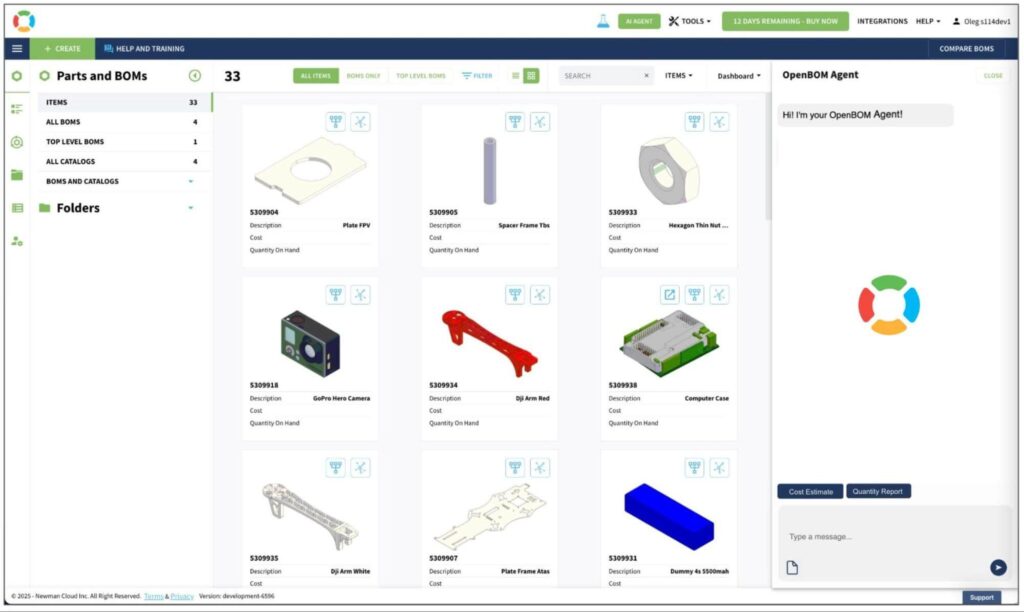
Let’s say you:
- Upload a new list of parts for a future device you want to build.
- Tag parts by suppliers and lead times.
- Share a view with your manufacturing partner.
All of this becomes part of the evolving knowledge base. When another engineer starts a related design, or a procurement team wants a cost comparison—they don’t start over. The Agent is already there, aware of context, ready to help.
This goes beyond task automation. It’s a form of organizational memory. One that remembers what your company did, why it made a decision, and how that decision impacted the product downstream.
Invisible tools do more than help. They amplify your decisions.
The Future of Interaction Is Subtle
OpenBOM AI Agent is not here to replace engineers or automate away critical thinking. Or become the next dashboard you have to log into.
It’s here to make your tools disappear—to become a presence that fades into the background until you need it, and then shows up with exactly what you need.
This is the beginning of a new era in product lifecycle interaction. One where less interface means more insight. One where agents quietly build bridges across teams, tasks, and data silos.
Conclusion
The most exciting part? We see how many people will be able to simplify their processes just by using OpenBOM Agent in their day-to-day work with Excel (and other) files… People are using Excels today as a lingua franca. But while they like to send an Excel to a contractor because of the ease of how to do so, to prepare those Excels takes a lot of time and effort. Keeping them consistent also takes time. Recombine data from multiple data sources is also hard.
Next time you upload a file and get a clean BOM. Next time your supplier file becomes an order-ready list. Next time you get a notification suggesting a change… that’s not a feature. That’s an Agent, working invisibly.
As we unveil OpenBOM AI Agent, remember: We don’t see it as a new button to press. It’s a new way to work—with less friction, more context, and a system that knows when to stay out of your way.
Best, Oleg
Join our newsletter to receive a weekly portion of news, articles, and tips about OpenBOM and our community.

